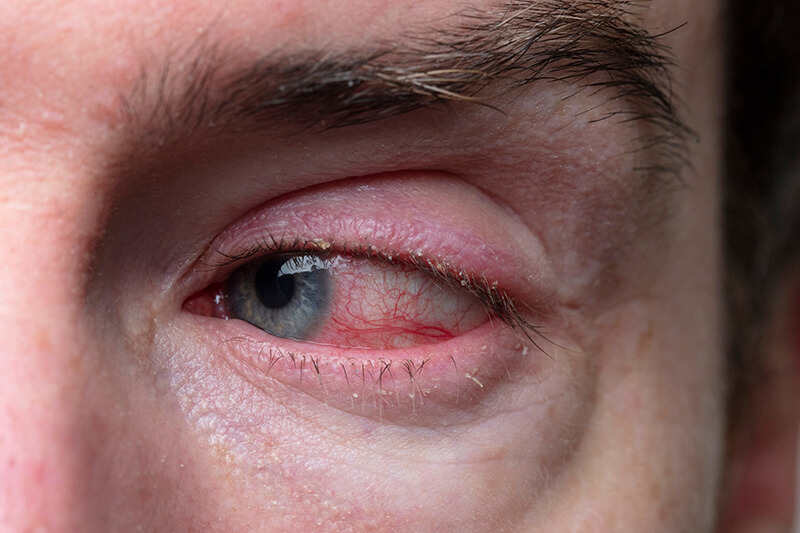Home » Common Vision Disorders » Blepharitis
Blepharitis
Blepharitis (“bleff are eye tis”) is a scaly inflammation of the edge of the lid, where the eyelashes emerge. Along with flaking of the skin, there may eventually be loss of some lashes. The condition used to be called”granulated eyelids.” It can be thought of as dandruff of the eyelashes, but is not always connected to scalp dandruff. Or it can be from a staph infection which just happened to get into the root of the eyelashes. It is also associated with dry eyes and oily skin.
Unlike most minor infections of the eyes, which will clear quickly in a few days, blepharitis often takes several weeks even with treatment because the bacteria are hidden in the roots of the eyelashes where antibiotics do not penetrate well.
The treatment consists of long-term and frequent cleansing of the eyelids, and sometimes instillation of antibiotic eye drops. The eyelashes and the edge of the lids should be cleaned twice daily with a warm washcloth using regular tap water. You can also use some very dilute baby shampoo to enhance the cleaning process or use one of the specially prepared soaps available for this purpose, such as “Eye-Scrub” cleanser, which is available in most pharmacies. Any crusted material on the eyelashes should be wiped away.
When antibiotics are prescribed, two drops of the antibiotic should be instilled in each eye four times daily for one week and then twice daily until the bottle is empty. After instilling the eye drops, close your eyes and rub the excess medication into your eyelashes and along the edge of the lids with your finger.
Some people have a tendency toward chronic or recurrent blepharitis and never seem to get rid of it once and for all. For them, it is often advisable to apply a warm compress to their eyelids each and every morning to completely remove all crusted material, and then to wash their lids with Eye-Scrub. Often people with chronic blepharitis have to use antibiotic eyedrops for several weeks every year to keep the condition under control.
Any dandruff associated with the blepharitis needs to be treated. Daily shampooing with”Head and Shoulders” or “Selsun Blue” should suffice.
Cosmetics are a frequent cause of blepharitis. Also, contaminated cosmetics or applicators can cause reinfection once the original symptoms have cleared. If in doubt, buy a new set of materials or try another brand, especially recommended are the “hypo-allergenic” brands available in most department stores. Blepharitis is generally not felt to be contagious, again much like dandruff in this regard.







